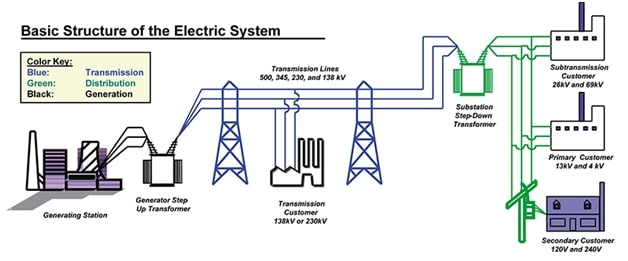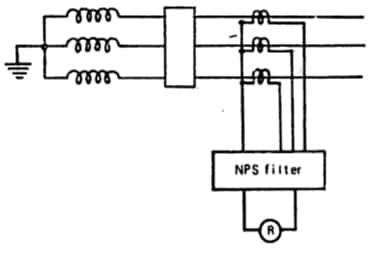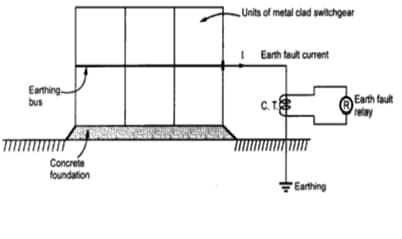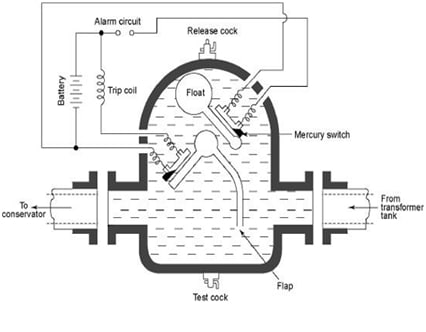
Let your fellow electrical engineer Yasser discuss about those mechanisms below. Send us articles just like him via email
What is electrical system?
An electrical system starts from the generating units and the major element is the generator to transformers to the transmission and distribution where the major elements are feeders and busbars.

Figure.1 Electrical Power System | image: econ.iastate.edu
In this article we are going to discuss some of the mechanisms used in protecting the parts of electrical system.
Generator protection
Many abnormal conditions that generators may have e.g. reverse operation, overload and unbalance of load. We are going to discuss the load unbalance as example for the mechanisms of protection used for generators.
The stator 3-ph current must be balanced for proper operation of generator. But when there is a current unbalance, a –Ve sequence current is generated causing an increment in the temperature of rotor surface which may damage it if it lasted for long time. This damage is because the negative current flows in the rings of the non-magnetic rotor and on the surface.
Therefore an inverse time overcurrent relay with a NPS filter are used to detect this negative sequence current as shown in figure 2.

Figure.2 Protection against unbalanced load using negative sequence filter | image: yourelectrichome
Busbar Protection
There are many ways mechanisms to protect BBs like differential protection, directional protection, protection against overcurrent and protection of the frame current leakage.

Figure.3 Frame leakage protection using earth fault relay
As seen in figure 3 an earth fault relay is used to sense the current in the earthing bar of the equipment using current transformer and an isolating signal is sent to the breaker once an abnormal condition is detected by the relay.
Transformer Protection
Earth fault, insulation breakdown, winding flashover, overcurrent, over voltage and loss of oil are some of the abnormal conditions and faults that the transformer face.
Loss of oil or tank fault is the one we are going to discuss as an example. The oil which is used in isolation and cooling of transformer is very important to prevent the increment of temperature of the transformer. This oil may decrease for any reason and that is why it is a great concern to detect this leakage and fix it.
One of the mechanisms used is Bucholoz protection. Figure 4 shows the operation of Bucholoz relay.

Figure.4 Bucholoz relay operation mechanism
The operation of this relay depends on the fact that gases are generated in the oil in the case of any fault. Those gases reduces the level of oil, tilt the float and connect the mercury switch which energizes the relay and actuate the alarm.
Conclusion
Briefly, as we discussed in this article, there are many abnormal conditions in the electrical systems and a lot of protection mechanisms are used to protect it against those faults.
Of course we didn’t mention all the mechanisms and they need a book to be clearly mentioned not just an article, therefore if you are responsible for the protection of an electrical system first start analyzing the system as overall, define the expected abnormal conditions and search for the proper mechanism that fits your application.
Thank you for reading my essay,
Yasser.
Do you know more mechanisms of protection for electrical systems? Share your knowledge in the comments!
Thank you such a very nice forum post.